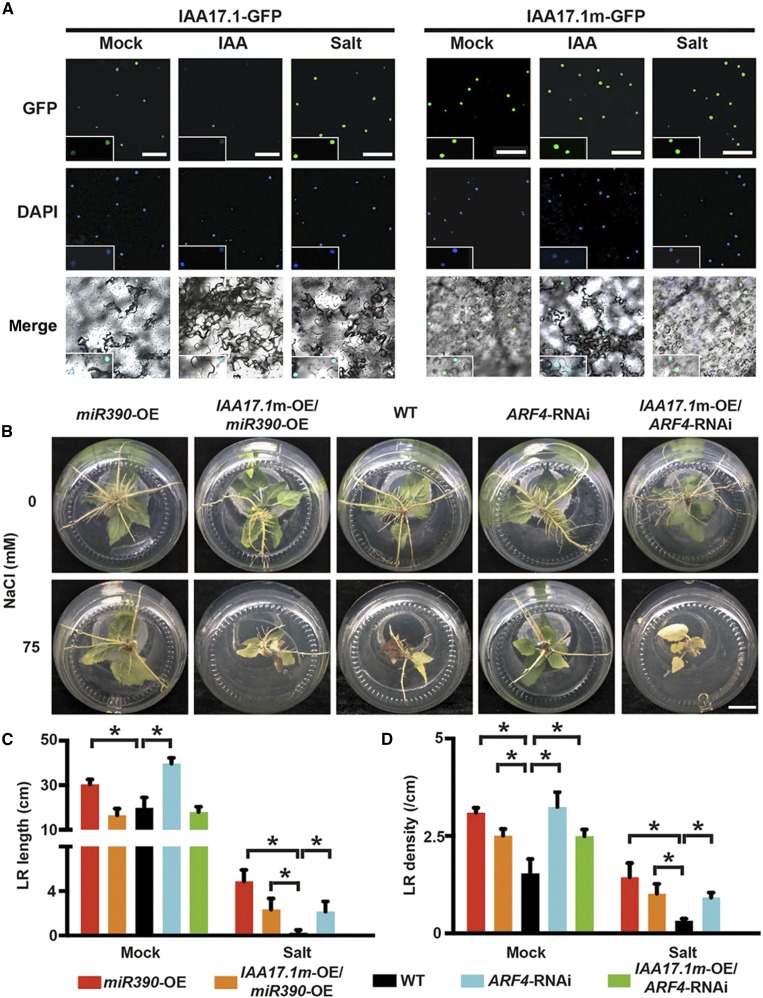Figure 7.
IAA17.1, an Aux/IAA protein, is required for miR390/ARF4-mediated LR development under salt stress. A, Auxin/salt-responsive protein stability of IAA17.1 indicated by fused GFP tag. IAA17.1m, an auxin-resistant form of IAA17.1, was generated by a Ser substitution for the first Pro in the Degron motif of domain II (Supplemental Fig. S11D). GFP-tagged IAA17.1 and IAA17.1m were transiently expressed in epidermal cells of N. benthamiana leaves via Agrobacterium tumefaciens-mediated infiltration. The transformed leaves were treated with auxin or salt for 2 h: 50 μm cycloheximide (CHX, an inhibitor of protein synthesis in eukaryote cells; mock treatment), 50 μm CHX and 20 μm indole-3-acetic acid (IAA; auxin treatment), and 50 μm CHX and 200 mm NaCl (salt treatment). The nuclei of transfected epidermal cells were indicated by 4,6-diamidino-2-phenylindole (DAPI; working solution, 1 μg mL−1). GFP and DAPI fluorescence was determined via confocal microscopy. Bars = 25 μm. B, Root phenotypes of IAA17.1m transgenic seedlings in the miR390-OE or ARF4-RNAi background under mock and salt treatment. The cutting-propagated seedlings of the wild type (WT), miR390-OE, IAA17.1m-OE/miR390-OE, ARF4-RNAi, and IAA17.1m-OE/ARF4-RNAi were cultivated in vitro and subjected to 0 mm (mock) or 75 mm NaCl (salt) for 4 weeks. Bar = 2 cm. C and D, Quantification of total LR length (C) and LR density (D) of IAA17.1m transgenic seedlings in the miR390-OE or ARF4-RNAi background under mock and salt treatment. Salt treatment was performed as described in B. Error bars represent sd. Asterisks indicate statistically significant differences in two-way ANOVA followed by Dunnett’s test for pairwise comparisons between wild-type and transgenic lines (*, P < 0.05; n = 5).

